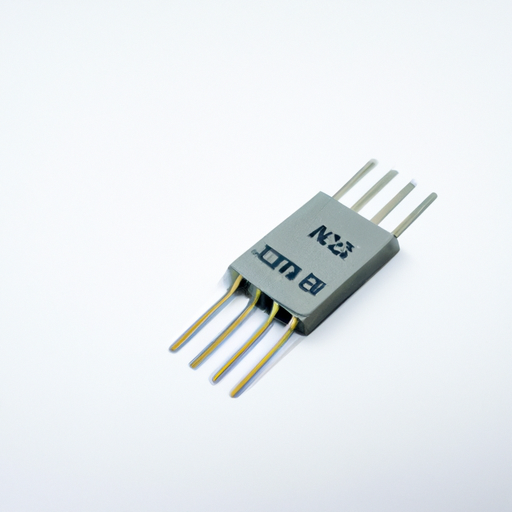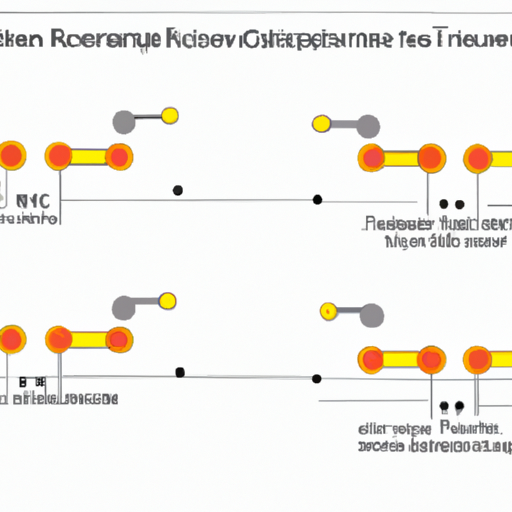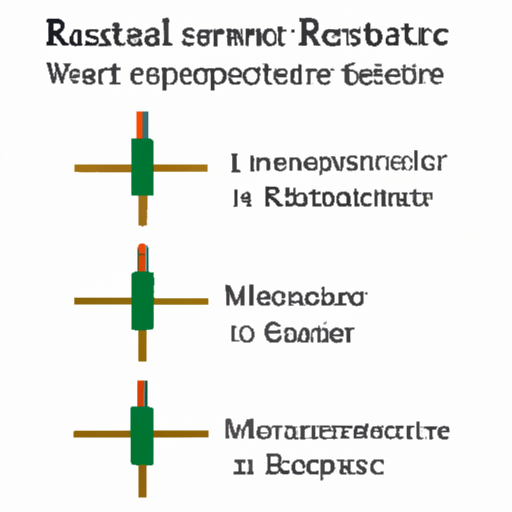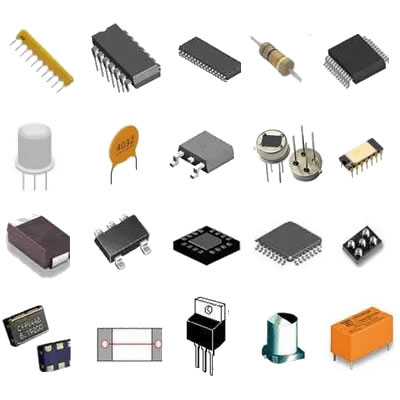What are the product features of resistor rt54?
What are the Product Features of Resistor RT54?
I. Introduction
Resistors are fundamental components in electronic circuits, serving the essential function of limiting current flow and dividing voltages. Understanding the specific characteristics of different resistor models is crucial for engineers and hobbyists alike, as it can significantly impact circuit performance and reliability. One such resistor model that has garnered attention is the RT54 resistor. This blog post will delve into the product features of the RT54, exploring its specifications, applications, and how it compares to other resistor models.
II. General Characteristics of Resistors
A. Definition and Function of Resistors
A resistor is a passive electronic component that resists the flow of electric current. It is characterized by its resistance value, which is measured in ohms (Ω). Resistors are used in various applications, including voltage division, current limiting, and signal attenuation.
B. Types of Resistors
1. **Fixed Resistors**: These resistors have a constant resistance value and are the most commonly used type in electronic circuits.
2. **Variable Resistors**: Also known as potentiometers or rheostats, these resistors allow for adjustable resistance values, making them suitable for applications like volume controls and tuning circuits.
C. Key Specifications of Resistors
1. **Resistance Value**: The primary specification, indicating how much the resistor opposes current flow.
2. **Tolerance**: This indicates the precision of the resistor's resistance value, expressed as a percentage.
3. **Power Rating**: The maximum power the resistor can dissipate without being damaged, typically measured in watts (W).
4. **Temperature Coefficient**: This specification indicates how much the resistance value changes with temperature, measured in parts per million per degree Celsius (ppm/°C).
III. Overview of RT54 Resistor
A. Manufacturer and Brand Reputation
The RT54 resistor is manufactured by a reputable company known for producing high-quality electronic components. The brand's commitment to quality and reliability has made the RT54 a popular choice among engineers and designers.
B. Typical Applications of the RT54 Resistor
The RT54 is commonly used in various applications, including consumer electronics, industrial equipment, and automotive systems. Its versatility makes it suitable for both low-power and high-power applications.
C. Comparison with Other Resistor Models
When compared to other resistor models, the RT54 stands out due to its robust specifications and reliability. It is often favored in applications where precision and stability are critical.
IV. Detailed Product Features of RT54
A. Resistance Range
1. **Available Resistance Values**: The RT54 is available in a wide range of resistance values, typically from a few ohms to several megaohms. This variety allows it to be used in diverse applications, from simple circuits to complex systems.
2. **Applications for Different Resistance Values**: Lower resistance values are often used in power applications, while higher values are suitable for signal processing and voltage division.
B. Tolerance Levels
1. **Standard Tolerance Options**: The RT54 offers various tolerance levels, typically ranging from ±1% to ±5%. This flexibility allows designers to choose the appropriate level of precision for their specific application.
2. **Impact of Tolerance on Circuit Performance**: A lower tolerance level means greater accuracy in resistance value, which is crucial in precision circuits where small variations can lead to significant performance differences.
C. Power Rating
1. **Maximum Power Dissipation**: The RT54 is designed to handle a maximum power dissipation of up to 1 watt, making it suitable for a wide range of applications.
2. **Importance of Power Rating in Circuit Design**: Selecting a resistor with an appropriate power rating is essential to prevent overheating and potential failure in electronic circuits.
D. Temperature Coefficient
1. **Explanation of Temperature Coefficient**: The temperature coefficient of the RT54 indicates how much its resistance changes with temperature variations. A lower temperature coefficient signifies better stability across temperature changes.
2. **RT54’s Temperature Stability and Performance**: The RT54 is designed to maintain its resistance value even under varying temperature conditions, ensuring reliable performance in diverse environments.
E. Physical Dimensions
1. **Size and Form Factor**: The RT54 is available in various sizes, making it suitable for different circuit designs. Its compact form factor allows for easy integration into both through-hole and surface mount applications.
2. **Mounting Options**: The RT54 can be mounted using traditional through-hole techniques or surface mount technology (SMT), providing flexibility in design and manufacturing processes.
F. Material Composition
1. **Types of Materials Used in RT54**: The RT54 is typically made from high-quality materials, including carbon film or metal film, which contribute to its durability and performance.
2. **Impact of Material on Performance and Reliability**: The choice of materials affects the resistor's thermal stability, noise characteristics, and overall reliability, making the RT54 a dependable choice for various applications.
G. Environmental Ratings
1. **Operating Temperature Range**: The RT54 can operate effectively within a wide temperature range, typically from -55°C to +155°C, making it suitable for both indoor and outdoor applications.
2. **Moisture and Chemical Resistance**: The RT54 is designed to withstand moisture and certain chemicals, ensuring longevity and reliability in challenging environments.
V. Performance Characteristics
A. Voltage Rating
1. **Maximum Voltage Handling**: The RT54 can handle a maximum voltage of up to 250 volts, making it suitable for high-voltage applications.
2. **Implications for Circuit Design**: Understanding the voltage rating is crucial for ensuring that the resistor can safely operate within the circuit without risk of breakdown.
B. Frequency Response
1. **Behavior at Different Frequencies**: The RT54 exhibits stable performance across a range of frequencies, making it suitable for both low-frequency and high-frequency applications.
2. **Applications in High-Frequency Circuits**: Its ability to maintain performance at high frequencies makes the RT54 ideal for RF applications and signal processing.
C. Noise Characteristics
1. **Thermal and Shot Noise Considerations**: The RT54 is designed to minimize thermal and shot noise, which is essential in sensitive applications such as audio and precision measurement circuits.
2. **Importance in Sensitive Applications**: Low noise characteristics enhance the overall performance of circuits where signal integrity is paramount.
VI. Applications of RT54 Resistor
A. Common Uses in Consumer Electronics
The RT54 is widely used in consumer electronics, including televisions, audio equipment, and home appliances, where reliability and performance are critical.
B. Industrial Applications
In industrial settings, the RT54 is employed in control systems, automation equipment, and instrumentation, where precise resistance values are essential for accurate measurements and control.
C. Role in Automotive and Aerospace Sectors
The RT54's durability and reliability make it suitable for automotive and aerospace applications, where components must withstand harsh conditions and operate reliably over extended periods.
D. Importance in Prototyping and Educational Projects
For engineers and students, the RT54 serves as an excellent choice for prototyping and educational projects, providing a balance of performance and affordability.
VII. Comparison with Other Resistor Models
A. Similarities and Differences with Other Fixed Resistors
While the RT54 shares many characteristics with other fixed resistors, its specific features, such as tolerance levels and temperature stability, set it apart in terms of performance.
B. Advantages of Using RT54 Over Competitors
The RT54 offers several advantages, including a wider resistance range, better temperature stability, and lower noise characteristics, making it a preferred choice in many applications.
C. Situations Where RT54 May Not Be the Best Choice
In applications requiring extremely high precision or specialized characteristics, other resistor models may be more suitable. It's essential to evaluate the specific requirements of each project before making a selection.
VIII. Conclusion
In summary, the RT54 resistor is a versatile and reliable component that offers a range of features suitable for various applications. Its robust specifications, including a wide resistance range, excellent tolerance levels, and strong environmental ratings, make it an ideal choice for both professional and educational projects. Understanding the key features of the RT54 is crucial for selecting the right resistor for specific applications, ensuring optimal performance and reliability in electronic circuits.
IX. References
1. Manufacturer specifications and datasheets for the RT54 resistor.
2. Relevant textbooks and articles on resistors and electronic components.
3. Online resources and forums discussing resistor applications and characteristics.
By understanding the product features of the RT54 resistor, engineers and hobbyists can make informed decisions that enhance their electronic designs and projects.




